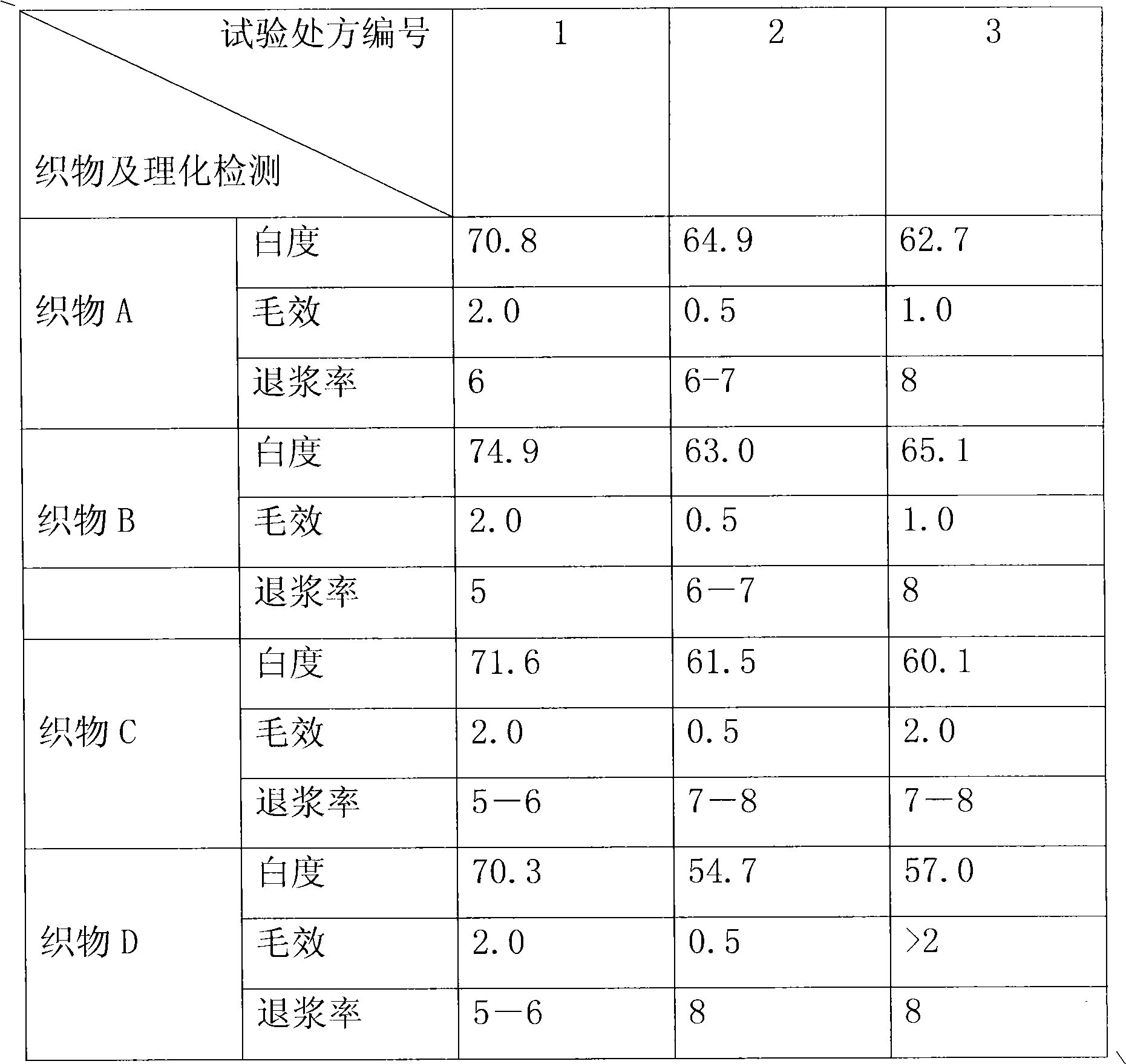Short-flow pre-treatment process for pure cotton woven fabric
A short-process, woven fabric technology, applied in textiles and papermaking, dry-cleaning fiber products, bleaching products, etc., can solve the problems of many equipment, a large amount of alkaline wastewater, long process, etc., and achieve good reproducibility and good desizing rate Effect
- Summary
- Abstract
- Description
- Claims
- Application Information
AI Technical Summary
Problems solved by technology
Method used
Image
Examples
Embodiment Construction
[0061] 1. Use the original equipment, remove part of the water tank, and use the original high-temperature steaming box as room temperature stacking to enhance the desizing effect. The original bleaching box completes the scouring and bleaching functions, and does not use caustic soda for scouring and bleaching.
[0062] 2. A variety of new environmentally friendly additives are used, including: mixtures of several enzyme preparations and some organic and inorganic chemicals, non-ionic and anionic mixed surfactants, mixtures of chelating agents and surfactants, etc.
[0063] 3. This process is suitable for pure cotton woven fabrics of various specifications, including high-count high-density poplin and thick-count heavy fabrics that are difficult to pre-treat, and can obtain good results.
PUM
 Login to View More
Login to View More Abstract
Description
Claims
Application Information
 Login to View More
Login to View More - R&D
- Intellectual Property
- Life Sciences
- Materials
- Tech Scout
- Unparalleled Data Quality
- Higher Quality Content
- 60% Fewer Hallucinations
Browse by: Latest US Patents, China's latest patents, Technical Efficacy Thesaurus, Application Domain, Technology Topic, Popular Technical Reports.
© 2025 PatSnap. All rights reserved.Legal|Privacy policy|Modern Slavery Act Transparency Statement|Sitemap|About US| Contact US: help@patsnap.com


